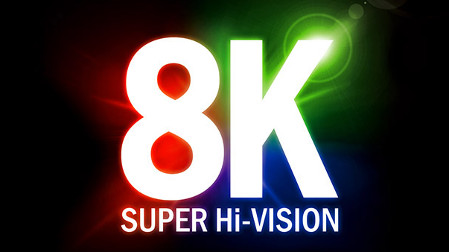8K Demos Paint a Pretty Picture of TV's Future
NEW YORK - I have seen the future of television, and it looks incredibly sharp. As always, though, the next leap in pure technology will be balanced against the needs and limitations of the commercial marketplace.
I speak of 8K, or specifically NHK’s Super Hi-Vision system. The company has been conducting broadcast demos in the U.S. lately, following a widely tracked experiment in 2014 with World Cup matches being beamed to sites in Japan and Brazil. NHK is aiming to start test satellite broadcasts in 2016, full satellite broadcasts in 2018 and further accelerate the promo push in 202 when Tokyo hosts the Summer Olympics.

Two 8K demos in recent weeks, one in June during the Women’s World Cup and the other at Yankee Stadium on July 17, left me convinced of the aesthetic potential but dubious of some of the practicalities. First, a confession. I have watched baseball avidly for my entire life. Soccer, while enjoyable in limited doses, is less of a passion point for me. So I will start with observations about the former national pastime. The ballgame I saw in 8K, a nighttime tilt between the Yanks and the Seattle Mariners, offered a completely new way to see the game, as if the eye doctor turned the dial to 11. The level of detail, due to the fact that 8K is 16 times sharper than current HDTV (2K on a Blu-ray disc or often 1080p via a set-top box), is extraordinary. Features that are usually just blurry brush strokes stand out in remarkable clarity: sunflower seed shells littering the field; ripples in the pitchers’ uniforms; brand names on clothing worn by fans 10 rows deep.
Then there’s the sound, which is dramatically more immersive than traditional 5.1 channel systems—Super Hi-Vision delivers 22.2-multichannel sound. The crack of the bat, the ball hitting leather, anything properly miked on the field reaches through the set and grabs you. The same was true in the soccer demo—watching Hope Solo boot a ball two-thirds of the way downfield seemed all the more impressive when the kick thudded in my chest cavity.
In these wonders, however, lie some logistical challenges. How likely are most viewers to install 22 speakers into their home viewing environment? (My wife already balked at five.) NHK does say it is “researching and developing ways for people to enjoy the 22.2-multichannel sound experience in limited audio environments, such as those with fewer speakers.” Then, of course, there are some key variables with the image quality—while the higher frame rate and greater bit depth certainly make the test experience compelling, how likely will “true 8K” be when delivered through the current distribution ecosystem? Already, as B&C’s resident tech guru, contributing editor George Winslow, points out, research shows how far short of 1080p current programming labeled as “HD” often falls. Unlike the tests I witnessed, which had no announcers, no on-screen graphics and only occasional replays, a commercial sports broadcast would be put through a much more dramatic filter. The color, sound and atmosphere will all be blended with the commercial objectives of networks and brands. The result will be something shy of the pure marvel I saw at Yankee Stadium and, on an even larger screen, at Fox’s Daryl Zanuck Theatre. What’s more, even 4K TV sets and programming remain in a fairly nascent stage, and some on Wall Street believe they have been a lot less of a business driver than anticipated. The CEA projects unit shipments of 4K UHD displays to hit 4.4 million in 2015, a 210% increase from ’14, with revenue more than doubling, to $5.3 billion. Not chicken scratch, but far from revolutionary.
A filmmaker and commercial director friend of mine, Craig Teper, salivated over the purity and potential of the Yankee Stadium experience, but he conceded that his was a shooter’s enthusiasm. “If you’re making something, you want 4K and 8K. It’s the best,” he told me. For the viewer, the question is going to be, as it has been forever, what price beauty? As spectacular as many 8K moments were for me, I can’t imagine paying the kind of premium I do to get HD. And the migration to HD came in a world before OTTs and skinny bundles. In the current era, technical upgrades might rank below items from the increasingly a la carte programming menu.
Get the TV Tech Newsletter
The professional video industry's #1 source for news, trends and product and tech information. Sign up below.
